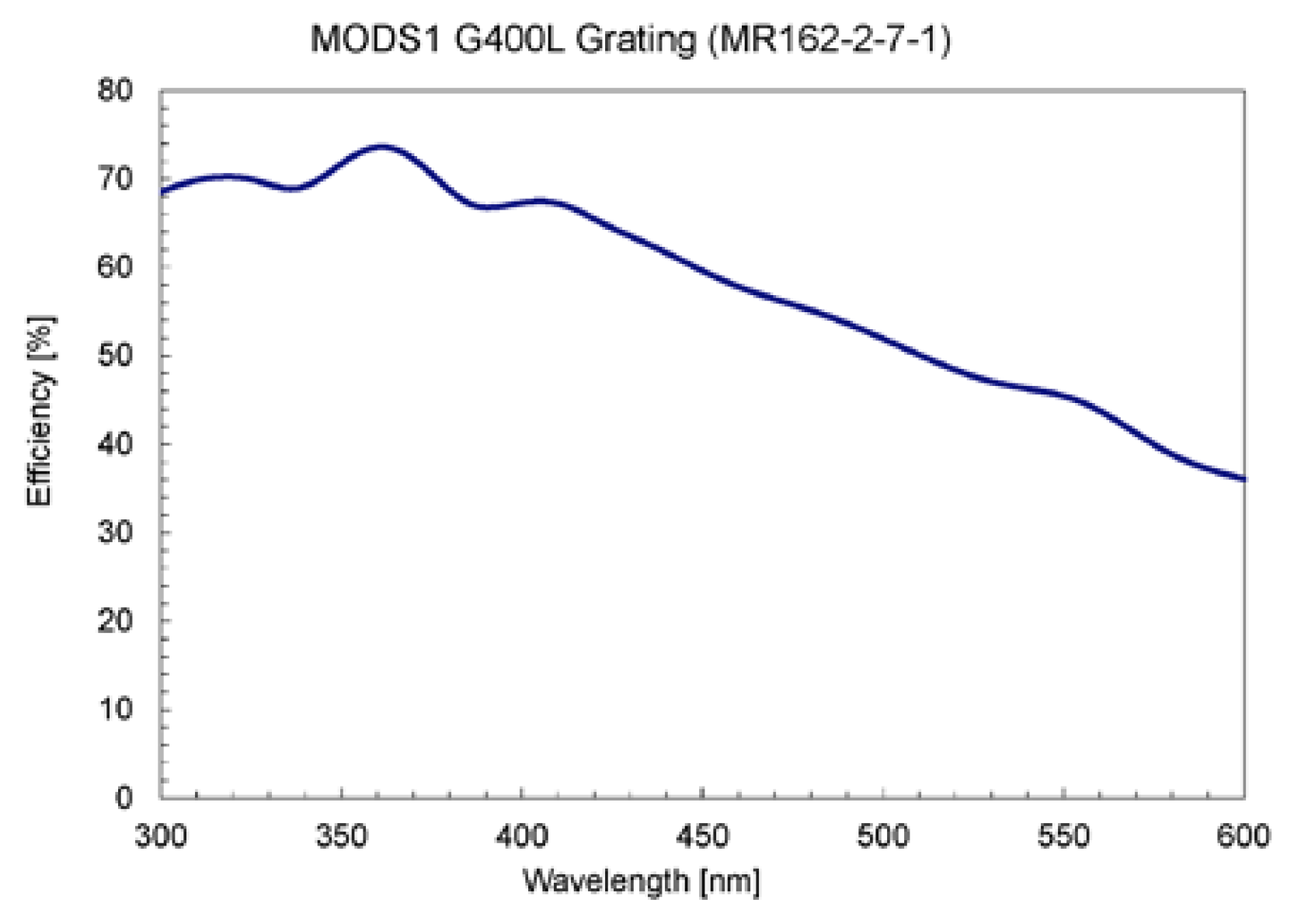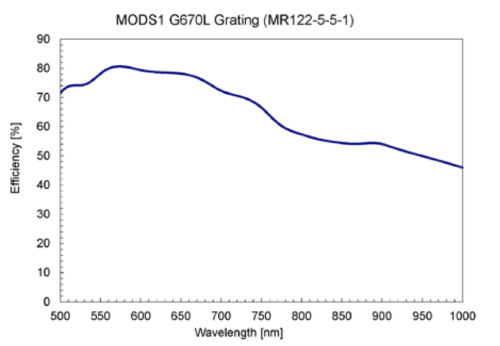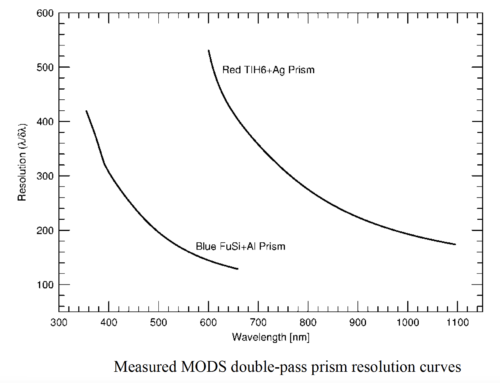Grating and Prisms
Primary Instrument Configuration
Each channel has a grating turret containing an imaging flat mirror and up to 3 dispersers. Currently 2 dispersers are installed. The configuration is summarized below:
| Channel | Grating ID | Description |
|---|---|---|
| Blue | Flat | Imaging Flat with enhanced Al |
| G400L | 400 line/mm Reflection Grating | |
| P450L | FuSi+Al Double-Pass Prism | |
| Red | Flat | Imaging Flat with Protected Ag |
| G670L | 250 line/mm Reflection Grating | |
| P700L | TIH6+Ag Double-Pass Prism |
Reflection Gratings
| Channel | Grating ID | Lines/mm | Blaze Angle | Order | Nominal Range (Å) | Linear Dispersion | Spectral Pixels | Resolution (0.6” Slit) |
|---|---|---|---|---|---|---|---|---|
| Blue | G400L | 400 | 4.4° | 1 | 3200-5800 | 0.515 Å/pix | 5200 | 1850 |
| Red | G670L | 250 | 4.3° | 1 | 5800-10000 | 0.845 Å/pix | 5700 | 2300 |
Grating resolutions quoted are measured at the reference wavelength (4000Å for Blue, 7600Å for Red) in a 0.6″ reference slit. The nominal linear dispersions quoted here are from the MODS1 Commissioning Report.
 |
 |
MODS currently has a set of red and blue gratings giving R≈2000 (λ/δλ) in first order with a 0.6″ slit. Space is reserved in the grating turret for a future set of higher resolution gratings (up to R≈8000 with a 0.6″ slit). The available gratings are tilted to give the optimal wavelength coverage for the full spectral range of MODS.
When observing with the red configuration only, a GG495 filter must be used to block out the second order from contaminating the first order. In dual mode the dichroic acts as an order blocking filter.
Prisms
MODS has two double-pass prisms with immersed reflection coatings to provide a very low resolution (R=100-500) mode. The blue prism is made of Fused Silica glass with an immersed aluminum coating, the red prism is made of TIH6 glass with an immersed silver coating.
| Channel | Grating ID | Nominal Range (Å) | Linear Dispersion | Spectral Pixels | Resolution (0.6” Slit) |
|---|---|---|---|---|---|
| Blue | P450L | 3200-6000 | 3-15 Å/pix | 650 | 420-140 |
| Red | P700L | 5800-10000 | 4-20 Å/pix | 650 | 500-200 |
The prisms are non-linear dispersers, with a resolving power that decreases with increasing wavelength. The larger spectral pixels (more Angstroms per pixel) at the red end can lead to saturation in continuum or lines, and leakage of blue light through the dichroic.

In prism mode, a GG495 Filter is used with the red-only and with dual mode, to block any blue light that might leak through the dichroic.
Because prism spectra map onto a small number of pixels in dispersion (~650 vs. ~5000 pixels for the gratings), it is possible to horizontally stack slits on the multi-slit masks to increase the number of objects observed.

